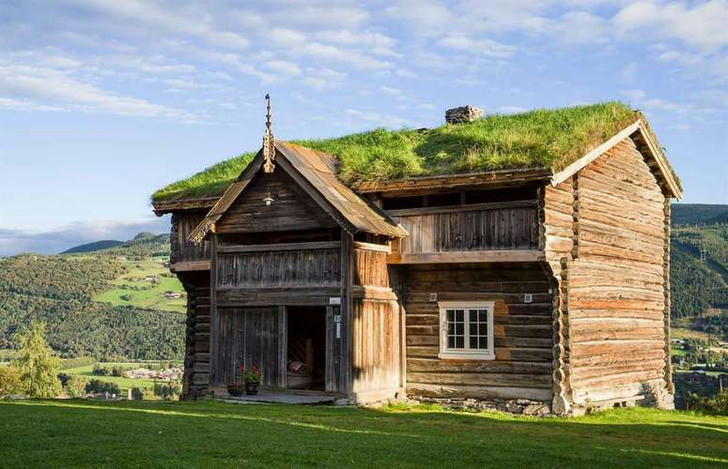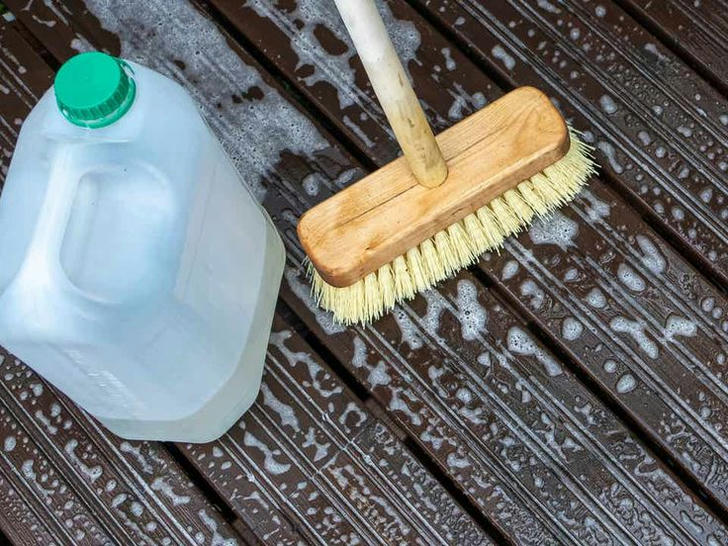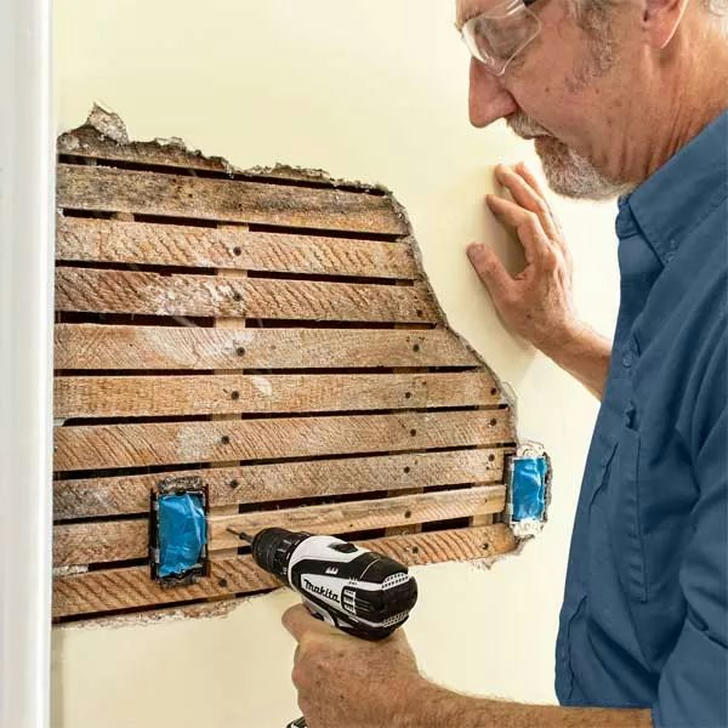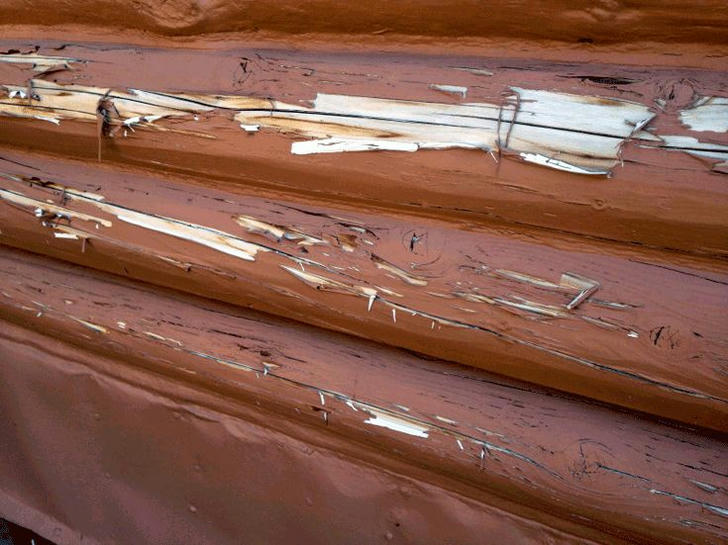Protecting Your Log Cabin's Exterior: Maintenance and Repair of the Siding
The exterior of your log cabin plays a critical role in both its aesthetic appeal and its structural integrity. The siding, often made of wood, is exposed to the elements, making it vulnerable to weather damage, pests, and wear over time. Proper maintenance and timely repairs are key to keeping your cabin looking beautiful while also protecting it from the harsh outdoors. This guide will take you through the essential steps to maintain and repair your log cabin's exterior, from cleaning and sealing to addressing rot and insect damage.

Why Exterior Maintenance is Crucial for Your Log Cabin
Wooden siding is naturally susceptible to environmental stressors like rain, snow, sun, and humidity. Without proper care, these elements can cause the wood to deteriorate, leading to rot, cracks, and eventual structural damage. Regular maintenance not only enhances the visual appeal of your log cabin but also extends its lifespan by protecting it from environmental damage.
Case Example: A log cabin owner in the Pacific Northwest neglected to regularly treat their cabin's wood siding with a protective finish. Over time, exposure to constant rainfall and moisture caused significant wood rot, which eventually compromised the structural integrity of the cabin. If regular sealing and maintenance had been performed, the damage could have been avoided.
1. Regular Cleaning: Keeping Your Exterior Free from Debris
Before tackling any maintenance or repairs, the first step in caring for your log cabin’s exterior is to keep it clean. Dirt, leaves, and other debris can trap moisture against the wood, which can lead to rot and mildew. Regular cleaning removes these contaminants, allowing you to identify early signs of damage and ensuring the wood remains protected.
Solution: Clean the exterior of your cabin at least once or twice a year. Focus on areas that tend to accumulate dirt, like the lower portions of the walls, around windows, and under the eaves.
Actionable Steps:
Use a soft-bristle brush or pressure washer on a low setting to clean the surface of the wood. Avoid harsh chemicals, as they can damage the wood or remove protective coatings.
Check the gutters regularly to make sure they are clear, as clogged gutters can lead to water overflow, which may damage the exterior walls.
After cleaning, inspect the wood for signs of rot, discoloration, or cracks.
Case Example: A cabin owner in Colorado regularly washed their log cabin's exterior with a pressure washer set to a low pressure. This routine helped maintain the cabin's appearance while also allowing them to detect areas where moisture had started to cause discoloration, prompting early repairs.

2. Sealing and Staining: Protecting Wood from the Elements
Sealing and staining are two of the most effective ways to protect the wood of your log cabin’s exterior. These treatments act as a barrier against the elements, preventing moisture from seeping into the wood and causing rot. They also provide UV protection, preventing the wood from becoming discolored or cracked due to sun exposure.
Solution: Apply a high-quality wood sealer and stain to protect your cabin’s exterior. The sealer prevents moisture infiltration, while the stain helps preserve the natural beauty of the wood.
Actionable Steps:
Apply a clear sealer or stain every 2-3 years, depending on the weather conditions in your area. In regions with high rainfall or extreme temperatures, more frequent applications may be necessary.
Choose a product specifically designed for exterior wood, ensuring it is UV-resistant and waterproof.
Clean the wood thoroughly before applying the sealer or stain to ensure that no dirt or grime will interfere with the application.
Test the product on a small area before covering the entire exterior to make sure it adheres properly and produces the desired result.
Case Example: A cabin in the Smoky Mountains had its exterior refinished every two years with a premium, eco-friendly wood stain. This treatment not only kept the cabin looking vibrant but also protected it from the humid climate, reducing the risk of mold and rot.

3. Repairing Cracks and Rot: Fixing Damaged Siding
Over time, wooden siding can develop cracks, splits, or areas of rot due to prolonged exposure to moisture. If left untreated, these issues can worsen, leading to more extensive damage. Repairing minor cracks early on can prevent them from growing into major problems.
Solution: Repair cracks and damaged areas by replacing rotting wood or filling small cracks with wood filler or epoxy. It's crucial to address the root cause of the damage—whether it's poor drainage or lack of sealing—to prevent the issue from recurring.
Actionable Steps:
Inspect the siding for cracks or areas that feel soft or spongy to the touch—these may indicate water damage or rot.
If only a small section of siding is affected, use wood filler to fill cracks and then sand it smooth. For larger areas of rot, remove the damaged wood and replace it with new planks.
Once the repair is complete, treat the repaired area with a protective sealant to prevent future moisture infiltration.
Ensure that all repairs are done in a way that maintains the aesthetic integrity of the cabin’s exterior, especially if the logs are exposed and not painted.

Case Example: A cabin owner in Maine noticed soft spots along the base of the cabin's exterior after several wet seasons. Upon closer inspection, they found that a section of the lower logs had begun to rot. They replaced the damaged wood, treated the new wood with a waterproof sealer, and added additional drainage around the base of the cabin to ensure water wouldn’t pool near the walls again.
4. Protecting Against Pests: Preventing Damage from Insects
Wooden siding is susceptible to insect damage, especially from pests like termites, carpenter ants, and beetles. These pests can burrow into the wood, compromising its strength and leading to extensive damage. Regular pest prevention is essential for keeping your cabin's exterior in good shape.
Solution: Implement preventive measures, such as applying insect-repelling treatments to the wood, sealing any gaps or cracks, and keeping the area around the cabin clear of wood piles and other potential pest habitats.
Actionable Steps:
Regularly inspect the exterior for signs of pest activity, such as small holes, sawdust piles, or mud tubes (which indicate termites).
Apply a non-toxic, wood-safe pest repellent to the exterior to deter insects. Make sure to follow the manufacturer’s instructions carefully.
Check for gaps around windows, doors, and seams, and seal them with caulk to prevent insects from entering.
Keep firewood and other wooden materials away from the cabin's foundation to minimize the risk of attracting pests.
Case Example: A cabin owner in Florida faced a recurring carpenter ant problem that was damaging the wood siding. After sealing all gaps and applying a targeted insecticide around the cabin, the problem was significantly reduced, and the exterior remained safe from further pest-related damage.

5. Regular Inspections and Maintenance: Staying on Top of Small Problems
Even with regular care, it’s important to conduct routine inspections of your log cabin’s exterior to stay ahead of potential issues. Catching problems early—whether they involve cracks, stains, rot, or pests—can save you time and money in the long run.
Solution: Make it a habit to check your cabin's exterior at least once a year, preferably in spring or fall, when the weather is mild. Use this time to assess the overall condition of the siding and perform any necessary repairs.
Actionable Steps:
Walk around your cabin and look for signs of wear, such as faded or peeling paint, cracks, or areas of moisture buildup.
Clean and reapply sealant or stain as necessary to ensure your cabin stays protected.
If you spot any major damage, such as large sections of rotting wood, address the issue promptly to prevent further damage.
Case Example: A cabin in Wyoming underwent annual exterior inspections, and during one fall check, the owner discovered a few small cracks in the wood. By addressing the cracks with filler and applying a fresh coat of stain, they avoided a larger, more costly repair down the road.

Conclusion
Maintaining and repairing the exterior of your log cabin is essential for protecting its beauty and integrity. By cleaning regularly, applying sealant and stain, repairing cracks, preventing pest damage, and performing routine inspections, you can ensure that your cabin stands the test of time. Whether you're dealing with a minor crack or tackling larger issues like rot, following these steps will keep your log cabin’s exterior in great shape, ensuring it remains a safe, cozy, and beautiful retreat for years to come.
